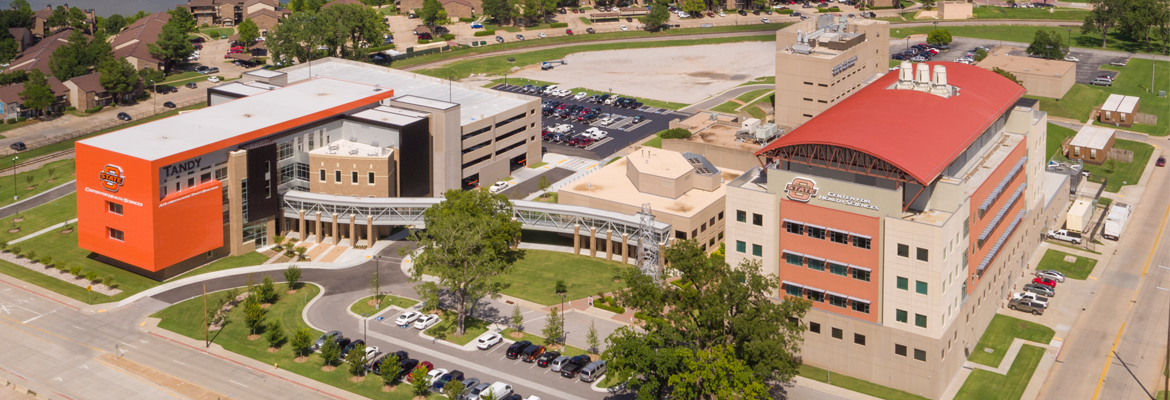
Mock crime scene gives OSU-CHS forensic sciences students first-hand experience
Thursday, March 3, 2016
A man mysteriously dies aboard an aircraft travelling to Dallas from Kansas City. Soon after, other passengers on the flight fall ill. The flight diverts to make an emergency landing in Stillwater so investigators can begin working the case.
Based on this mock scenario, nine forensic science graduate students from Oklahoma State University Center for Health Sciences were charged with gathering evidence and processing a mock crime scene staged at Stillwater Regional Airport on March 8.
Each student will present the results of the evidence as an expert witness in a mock court trial before District Judge Rebecca Nightingale on April 26. Tulsa County District Attorney Steve Kunzweiler and other assistant district attorneys are scheduled to question the witnesses.
The project is part of the Advanced Criminalistics course required of all OSU-CHS forensic sciences graduate students.
“We believe every forensic sciences student at OSU needs to experience a crime scene,” said Ron Thrasher, Ph.D., associate professor of forensic sciences. “When our students have their first career case and testify in court for the first time, they will have already practiced by participating in this exercise.”
The MD-80 aircraft, donated by American Airlines to OSU, sat on the tarmac outside Stillwater Regional Airport on a rainy day. The first-class section has been staged with what appeared to be blood spatter, half-filled soda cups, a powdered substance that appeared to be an illegal drug and a mannequin serving as the deceased.
The students climbed the stairs that protruded from the tail section and made their way to the front of the plane. They swabbed cups, took samples of the powder and blood spatter, bagged items, diagrammed the scene and made notes about the condition of the body. As in real life, students were required to maintain the chain of custody of all samples and bagged items.
The project was devised to teach students to process a crime scene, write accurate reports and act as an expert witness at a criminal trial, Thrasher said.
“When we go to a real crime scene, it will be like we have seen some of this before,” said Allie Sherier, an OSU-CHS forensic sciences student specializing in DNA analysis. “We will know what to expect.”
Thrasher said the trend in forensic sciences is moving from large crime labs to smaller regional ones.
“The average law enforcement agency has four or five officers. They are often policed by the most dedicated officers who truly care about their communities,” he said. “The problem is these agencies often need more money for training and equipment.”
The OSU-CHS forensic sciences students will likely help local law enforcement agencies in identifying, collecting and packaging evidence. A student specializing in DNA will also have the knowledge and ability to analyze all evidence at a crime scene.
Tyler Smith intends to become a death scene investigator, a type of researcher that typically evaluates a crime scene after it has been processed.
“I believe it is beneficial to experience a crime scene like this before everything is processed. It will help me understand what investigators have done before me and provide more context for my own investigation,” he said.
Kristin Dickerson, a forensic sciences student specializing in toxicology, said this exercise made her future career more real in her mind.
“We are definitely learning about the difficulties you might have in real life,” she said. “We are working in cramped conditions and realizing we need some equipment we left behind.”
The students climbed over one another in the narrow aisle as they gathered the evidence carefully. When they return to the OSU-CHS lab, students will be provided real blood and real drugs to analyze.
“We worked to make this as realistic as possible to enhance the learning experience,” Thrasher said. “I believe students learn more during this type of project than sitting in a classroom or a lab. There is a place for the classroom but this gives students a chance to try it out for real.”
Participating graduate students include Travis Brachtenbach, Dickerson, Ashley Lamothe, April Mitchell, Dane Robertson, Sunday Saenz, Madison Sanders, Sherier and Smith.
